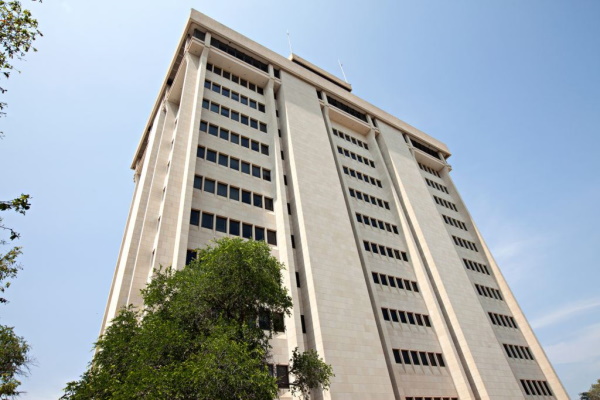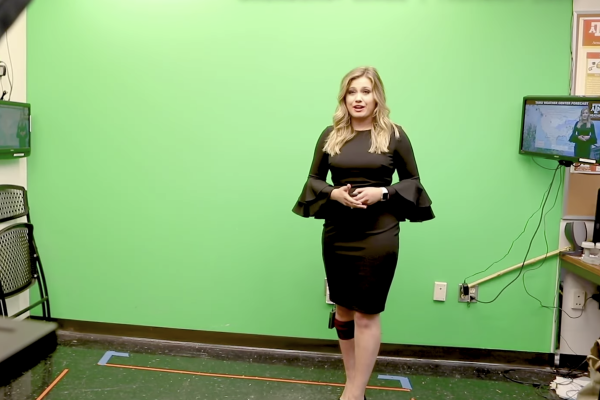A Perfect Storm: Aggies And Weather
Texas A&M’s meteorology program is one of the country’s best, and it’s likely your local weatherperson proves it almost daily.
Feb 10, 2021


Today’s outlook: partly cloudy and warm, with no rain but a very good chance that your weather forecast will be brought to you by an Aggie.
For decades, Texas A&M University has had one of the best meteorology programs in the country, and the media has taken notice – mainly by hiring them. Turn on the TV, and there will likely be an Aggie giving the forecast on the local news.
Scot Walker, assistant vice president for communications at The Association of Former Students, says there are least 150 Aggie grads who have the word “weather” in their job title.
“That’s a lot of weather Aggies,” he said.
So why does Texas A&M produce so many weather people?
“Our meteorology program is one of the best in the nation, and attracts exceptional students,” said Debbie Thomas, dean of the College of Geosciences.
“But I think this is also a testament to Aggie Selfless Service because broadcast meteorologists are such critical community resources. Effective weather communicators save lives.”
A quick answer as to why Texas A&M has so many graduates working in weather is probably a combination of several factors, said Dr. Chris Nowotarski, associate professor of atmospheric sciences.
“We have one of the top two or three largest undergraduate programs in meteorology in the country that is widely recognized as having a strong program in weather forecasting,” he said. “Also, we offer instruction and experience in front of a TV green screen just like the TV meteorologists do. Plus, we’re located in a state with a large number of local media markets which are likely to be run by many former students, and the Aggie Ring effect is real.”
Added Regents Professor and State Climatologist Dr. John Nielsen-Gammon: “TV weathercasters are often the de facto science reporters for their TV stations. Our program helps prepare them for this role with training in physics, chemistry, oceanography and climate. Students also have the opportunity to tailor their curriculum to specialize in particular aspects of meteorology, other sciences, or aspects of society that are affected by weather and climate.”
Travis Herzog, a 2004 graduate and chief weatherperson at KTRK in Houston, would agree. He said most people who get into weather forecasting were bitten by the weather bug at an early age.
“For me, it was a tornado spawned by Hurricane Gilbert in 1988,” he said. “It went right by our house in San Antonio and shook us all up – literally. From that day, I knew I wanted to be a meteorologist.”
Herzog, who graduated from Texas A&M with a perfect 4.0 grade-point average and has been at KTRK since 2006, said his training at Texas A&M has made all the difference.
“I got an excellent undergraduate weather education at A&M, and it wasn’t just from the courses,” he said. “I was active in the student meteorology club called TAMSCAMS (Texas A&M Student Chapter of the American Meteorological Society), and that provided unique opportunities to hear from guest speakers and to go on field trips to learn more about our amazing atmosphere.”
The list of Aggies on TV is a lengthy one.
Rachel Briers, also at KTRK in Houston, graduated in 2014, and in San Antonio, Justin Horne and Sarah Spivey give forecasts for KSAT. In Phoenix, Aggie grad Jorge Torres does the weather for ABC15 and was involved with the Texas Aggie Storm Chasers when he was a student.
In Waco, Brady Taylor gives the forecast for KWTX, and Josh Johns can be seen wearing his Aggie ring at KXXV. Avery Tomasco does daily weather broadcasts for KEYE in Austin, and David Finfrock has been a mainstay at KXAS in the Dallas-Fort Worth area for 45 years and worked alongside weather expert Rebecca Miller, who taught weather classes at Texas A&M for many years and now works for Southwest Airlines.
On the national front are Chris Samsury at The Weather Channel, and Jason Sippel, who gets up close and personal with storms – he flies into them as a Hurricane Hunter for the National Weather Service in Miami.
Matt Mosier holds two weather degrees from Texas A&M and provides critical information from his post at the Storm Prediction Center in Oklahoma City.
The list goes on and on – there are Aggie weatherpersons in Florida, Georgia, Tennessee, California, Missouri and many other states.
“Texas A&M helped prepare me for the career I have today and I am thankful I got to experience Aggieland,” said Johns, who started his career in South Texas, moved to San Angelo and now is in Waco.
“Anyone who is interested in pursuing a meteorology degree needs to really pay attention to the math and science classes as they are a heavy part of the curriculum. If anyone is interested in the broadcast side, a public speaking background wouldn’t be a bad idea either. While in school, I highly recommend seeking out a broadcast internship. I wouldn’t be where I am without my two internships.
“Travis Herzog and David Finfrock are the best in the biz, two meteorologists I really look up to. I watched Finfrock as a kid and later in life, was mentored by him. Once I got to A&M, I got to know Herzog and reached out to him multiple times for advice. The Aggie Network is very strong.”
That sentiment is shared by Shel Winkley, chief weatherperson at KBTX in Bryan-College Station. He has taught a broadcast meteorology class at Texas A&M since 2013.
“The Aggie Network is very real and it opens doors,” he said. “It’s very true that Aggies keep up with other Aggies. I was always appreciative that the school had some of the best technical equipment. We were able to make our own daily weather forecasts using our radar and other instruments. I think it gave us a great advantage over other schools.”

